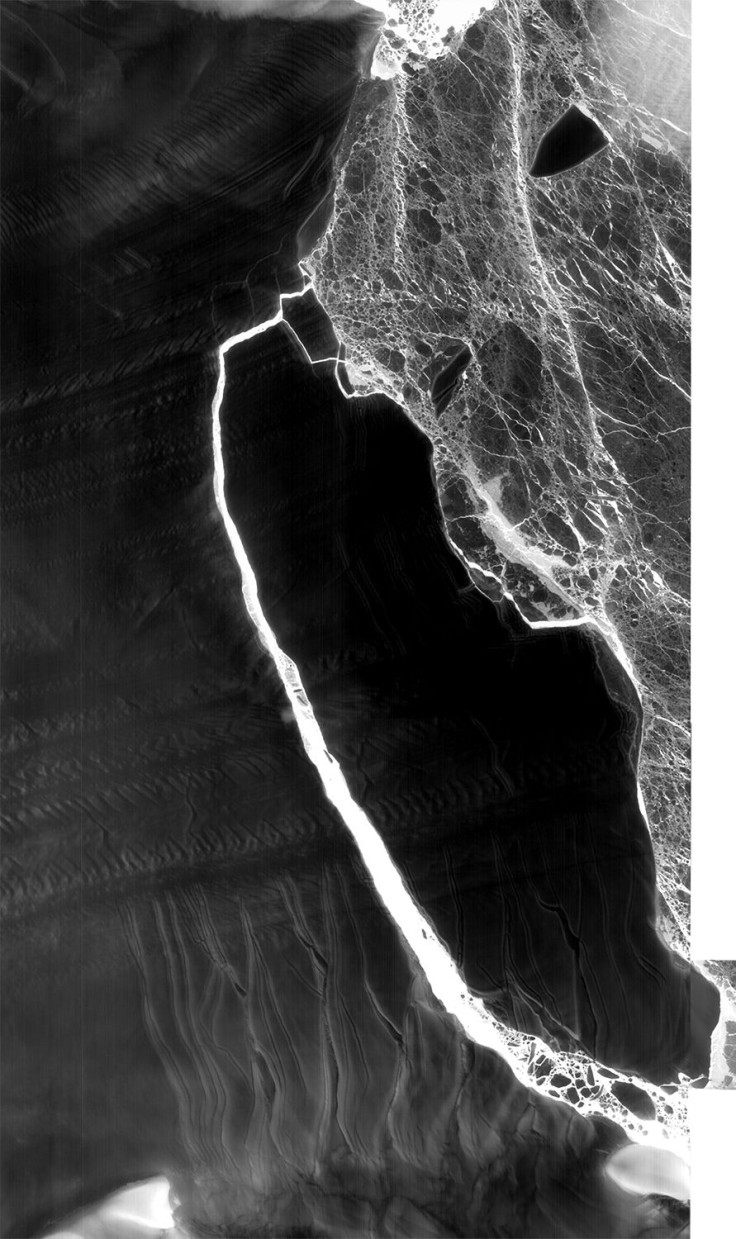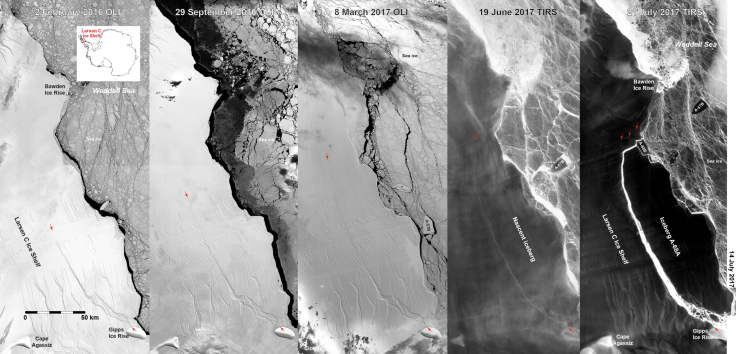Pieces Are Already Breaking Off Antarctica’s Lost Iceberg The Size Of Delaware

The massive iceberg that cleaved off from Antarctica earlier this month is already breaking into smaller pieces, which could potentially put ocean ships in danger.
Landsat 8, an imaging satellite, took overhead photos of the iceberg, dubbed A68, in the days after it separated from the Larsen C ice shelf in the western part of Antarctica. What it found was that smaller icebergs had in turn broken away from the larger mass, and that more are ready to follow suit. There are three “not yet released icebergs at the north end,” NASA reported when it shared the Landsat 8 images Tuesday.
The satellite had passed overhead to take the photos on July 14 and July 21, NASA said.
Those images also show that A68 is being carried north by currents, and is moving slowly away from the Larsen C ice shelf.
Read: 6 Enormous Things That Are Still Smaller Than the A68 Iceberg
The smaller icebergs that have already broken off A68 and will break off from it in the future are not unexpected. At the time of the calving, Project MIDAS, a research group based in the United Kingdom that focuses on Larsen C, mentioned the possibility in a post on its website.
“It may remain in one piece but is more likely to break into fragments,” Swansea University’s Adrian Luckman, a lead investigator for MIDAS, said in the report. “Some of the ice may remain in the area for decades, while parts of the iceberg may drift north into warmer waters.”
Drifting pieces could be a problem for ships, including those moving in the waters around southern South America. That’s not as far away as it sounds from the frozen Antarctic landmass: The location in western Antarctica from where the A68 iceberg broke off is on the part of the continent that reaches up into the South Pacific Ocean like a tentacle. It is only about 600 miles from the southernmost tip of South America, where that landmass curls and comes to a point.

A68 is so enormous that it has been described by American media outlets as being the size of Delaware. Other nations have described its size as being twice that of the small European country of Luxembourg. It is more than 2,200 square miles on its surface, weighs more than 1 trillion tons and is about 1,100 feet thick. Its water volume is so great that it could fill Lake Erie twice.
When the ice broke off from Larsen C, after a crack grew for months and kept scientists in suspense about when it would finally separate, it threatened the rest of the ice shelf’s stability, putting it at a greater risk of collapsing.
Read: A Few Facts About Icebergs
It may even disintegrate like the Larsen B ice shelf did 15 years ago, after a large iceberg broke off from it.
Despite the multiple dangers linked to A68’s independence from Antarctica, it does not pose a threat to sea levels. According to the MIDAS report, the iceberg was already floating in the water so it is not going to have any immediate effect.
But based on its size, it will force experts to redraw maps of the area.
“The calving of this iceberg leaves the Larsen C Ice Shelf reduced in area by more than 12 percent, and the landscape of the Antarctic Peninsula changed forever,” according to MIDAS.
© Copyright IBTimes 2025. All rights reserved.





















